How the Wiyot Tribe Won Back a Sacred California Island
The tribe finally completed a ceremony interrupted by a massacre in 1860.
On February 26, 1860, the people of the Wiyot Tribe had gathered on Duluwat Island in what is now Humboldt Bay, California, for a sacred, annual ceremony meant to last seven to 10 days. The dance had finished, but there was more yet to do—completion of the ceremony the next day, the Wiyot believe, would bring balance and healing to the world. The next morning, a group of white ranchers encircled the Wiyot and massacred more than a hundred of them. The few survivors either fled the island on canoes or were taken to a nearby fort as forced labor.
“When the massacre happened on the island, we were not able to complete that ceremony and bring the world back to balance,” says Wiyot tribal chair Ted Hernandez. “We were not able to heal.”
Three days before the massacre, a man named Robert Gunther had purchased all 280 acres of the island. Soon white settlers built dikes and drained the land for cattle grazing and lumber mills. On the northernmost part of the island, they built a boatyard on top of an ancient shell mound dating back to the year 900. The Wiyot population, which hovered around 3,000 in 1850, had dropped to just 100 in 1910.

For the Wiyot, Duluwat is more than an ancestral homeland. It is the spiritual center of the universe, a place of great power, and the tribe has fought for its return for more than a century, according to Michelle Vassel, a tribal administrator. On October 21, 2019, it finally happened. The city of Eureka voted unanimously to return Duluwat to the Wiyot Tribe. The vote, many years in the making, marks the first time a local municipality has voluntarily given land back to the indigenous people who lived there originally. “It’s unprecedented,” Vassel says. “The island was a missing piece for hundreds of years.”
The tribe had long hoped for the return of Duluwat, but didn’t officially ask for it until the 1970s, with a phone call to the government of Eureka, the city of 27,000 that then owned most of what was officially called “Indian Island.” They heard only laughter, writes Thadeus Greenson in the North Coast Journal. When Cheryl Seidner, a Wiyot tribal elder and former chair, called again decades later, she heard stammering instead.
In 1992, Seidner and her sister, Leona Wilkinson, held a vigil on the last Saturday in February to memorialize the land and those who died in the massacre. It became a yearly tradition on the west side of Woodley Island, a smaller plot between Duluwat and the mainland. “You’d start with a fire and people would sing their songs and talk about healing,” Hernandez says. “It was an opportunity for people to tell their stories and remember our ancestors.” Over time the vigils attracted as many as 300 people from the greater Eureka community.
In 1996, Seidner spotted a real-estate listing for a 1.5-acre plot of on Duluwat, the site of the former boatyard. The tribe began fundraising any way it could—benefit concerts with Native artists such as Floyd Red Crow Westerman, and selling T-shirts, tacos, and fry bread. “You name it, we did it,” Hernandez chuckles. Neighboring tribes donated thousands of dollars, and the Wiyot eventually raised the $106,000 they needed.

What they found there was a disaster. Rusted boat parts and an enormous diesel-powered winch poked through the ground. Years of toxins, sludge, and debris capped the shell mound like sedimentary rock. And the midden itself was visibly pockmarked by pot-hunters, Vassel says. “You could not walk on the property, what with the metal debris, lead paint, and big barrels of liquid of undetermined origin.” The shell midden, having eroded over the years, was held up by a makeshift retaining wall of old marine batteries.
So the work began, with a team of dedicated volunteers working weekends. They removed the rusty debris, including the huge winch, which they got off the island and onto a barge using traditional methods—a bed of rolling logs. As they cleaned up the shell mound, volunteers sometimes found bones, which they believe belonged to victims of the Wiyot massacred in 1860, according to Hernandez. “This is where our ancestors are and this is where their blood was shed,” he says, “and yet they’re covered in chemicals.”
In 2001, the Environmental Protection Agency provided a Targeted Brownfields Assessment grant to clean the site more thoroughly. Testers found hazardous levels of pentachlorophenol, dioxins, and furans, and high levels of arsenic, according to an EPA report. “People were shocked to see people in hazmat suits digging up the soil,” Vassel says. The agency worked with the tribe to remove as little soil as possible, and screen what they excavated for artifacts and remains. The battery wall was replaced by shells donated by a local oyster company.
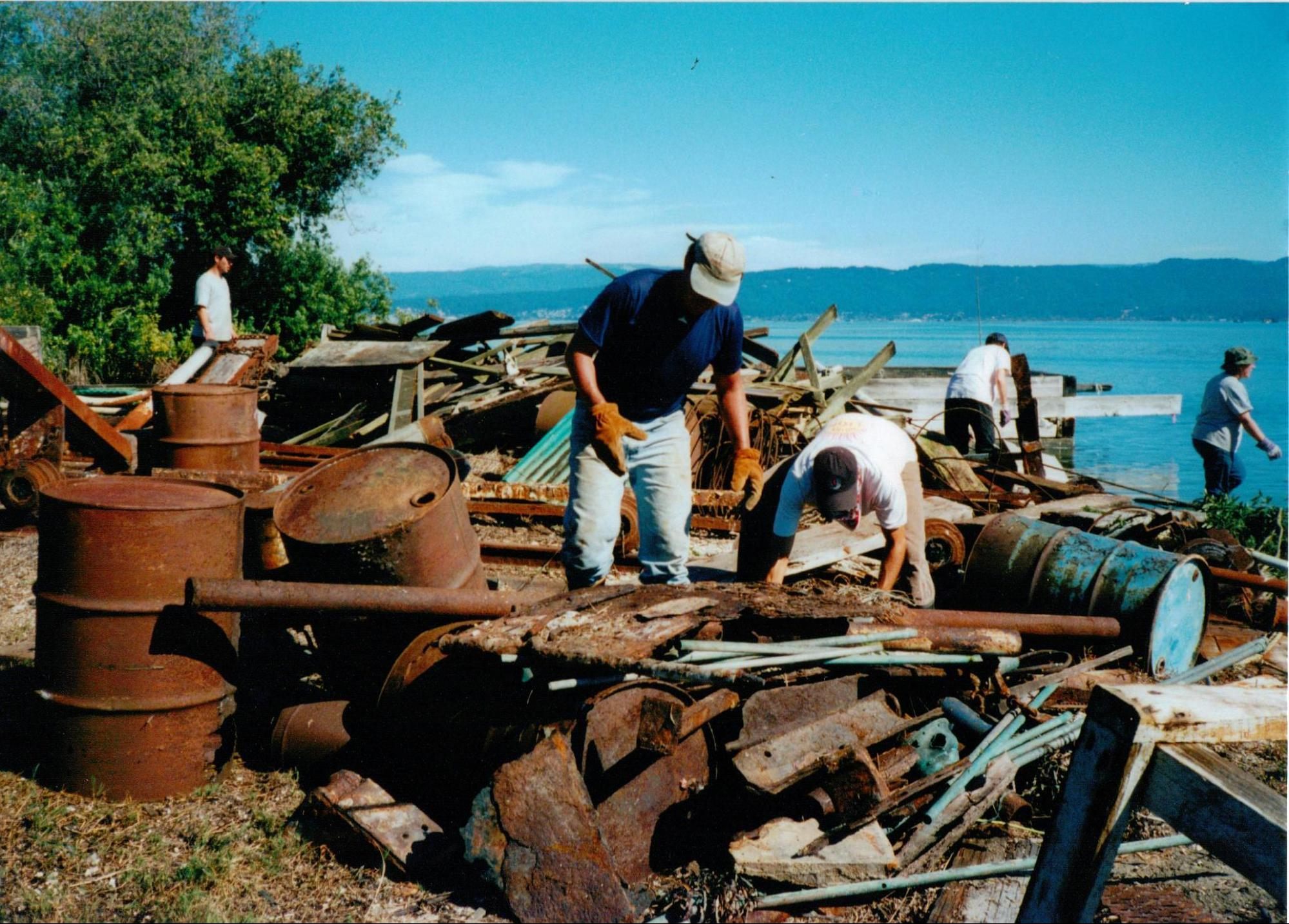
In 2004, Eureka donated an additional 40 acres of land of the northern tip of Duluwat to the Wiyot, including the tribe’s former burial grounds and the rest of the shell midden. There, volunteers cut back invasive cord grass to allow native eelgrass to recover, and planted cuttings of native willows from a neighboring island. They tore down buildings, repainted a metal shed, and capped the remaining contaminated soil with sheets of fabric covered with soil, crushed shells, and native grass seed, according to the EPA report. The island received an official clean bill of health from the EPA in 2014. After 13 years, 70 tons of scrap metal, and 26 tons of soil, Duluwat was ready to be danced on.
In spring 2014, one month after the Wiyot’s last vigil and 154 years after the massacre, the tribe returned to Duluwat to hold their World Renewal Ceremony. The Wiyot’s religious beliefs are interconnected with those of four other tribes in the area: the Hupa, Yurok, Karuk, and Tolowa (the Chilula was another former, connected tribe), according to Vassel. The five tribes all celebrated the ceremony, but without the Wiyot, “the circle was broken,” Hernandez says. “But our four cousin tribes have kept the ceremony going for us.”
The tribe dove into preparations. After the massacre, the surviving, splintered members of the Wiyot Tribe had lost precise knowledge of the ceremonial dance. They had to reconstruct it from the related dances of the other tribes, Seidner told the North Coast Journal. “The Yurok and Hupa helped us bring back the ceremony we lost,” Hernandez says, noting that the Yurok Tribe lent dugout canoes to transport people to the island. Before the dances started, Hernandez spoke with with a Yurok elder who had come to see the ceremony to fruition. “He said he’s always been waiting for us. And that he was happy to see us back in the circle.”

The dancers also needed something to wear. Most of the Wiyot’s traditional regalia now resides in museums or private collections, Hernandez says. Here the cousin tribes helped again by lending some items, while others were crafted anew, with condor feathers donated by Sía, the Comanche Nation Ethno-Ornithological Initiative, according to the North Coast Journal. “We’re building up our collection again,” he says.
To prepare for the ceremony, dancers fasted for seven days. People slept on the island, in tents, in the repainted metal shed, and even outside in the nippy March air. Younger members listened to elders tell stories of the island over the sounds of lapping ocean waves. Hernandez says the island’s stillness and isolation made him forget that there was a freeway running over the southern tip of the island and another society just miles across the bay in Eureka. “We were in our own little world,” Hernandez says. “It felt like we were back at home.”
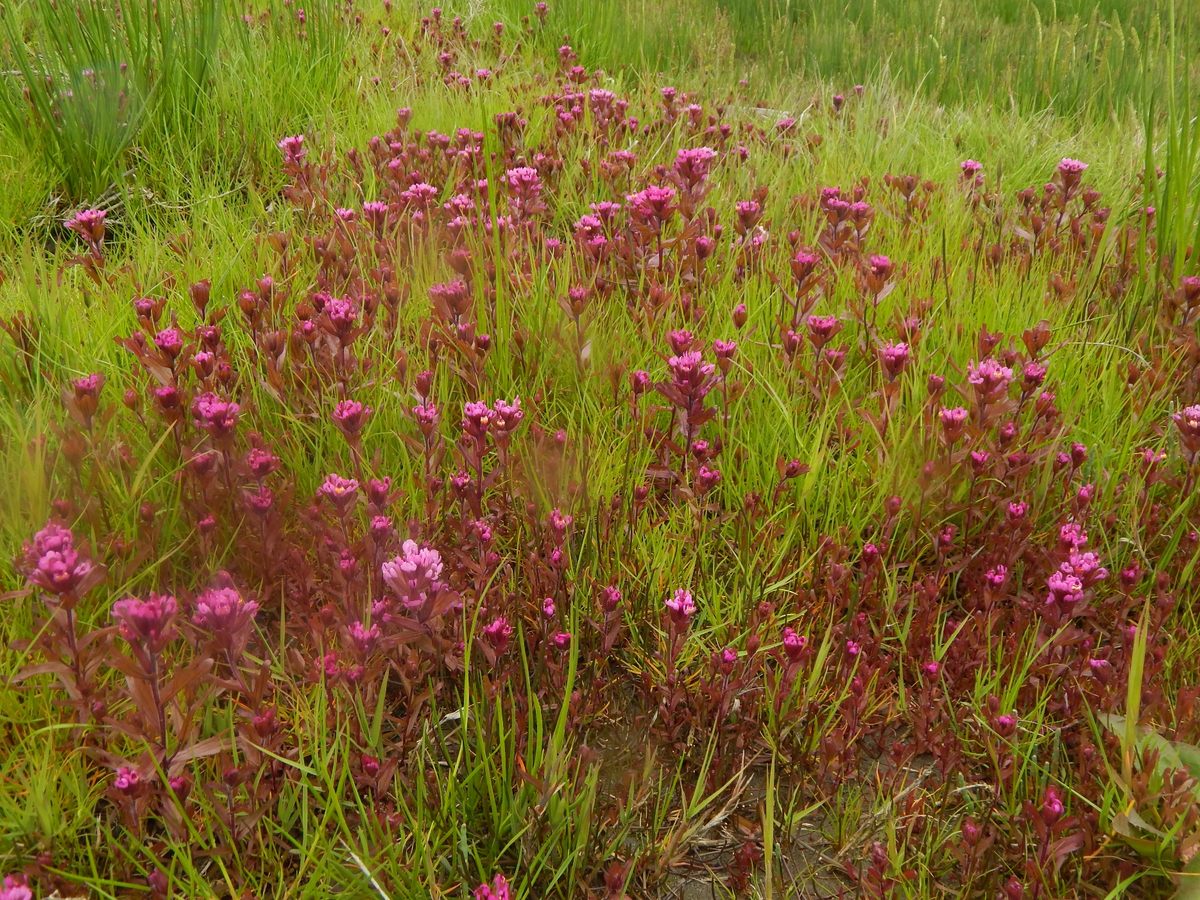
The final three days of the ceremony were devoted to dance. “Our youngest boy who danced was maybe nine, and the oldest was 70,” Hernandez says. “To have so many generations was an amazing feeling.” On the last day, sea lions came up and sat on the beach to watch. When they completed the final dance, it began to rain heavily. “It cleansed the land that we were dancing on, and we knew the ceremony was complete.”
Duluwat’s ceremony was private, but the true return of the island was markedly public. On October 21, 2019, hundreds poured into Eureka’s Adorni Center at 10 a.m. on a workday. The joy in the room was tangible, according to Cutcha Risling Baldy, department chair of Native American studies at Humboldt State University, who is Hupa, Yurok, and Karuk. “There were times when you could have heard a pin drop,” says Kim Bergel, a Eureka City Councilmember.
At the ceremony, Seidner set up two chairs beside the podium: one adorned in a quilt donated by the people who helped raise funds for the initial purchase of 1.5 acres, and the other left empty to remember the victims of the massacre. A group of Wiyot people performed the healing Bush Dance. Hernandez was so moved that he left the podium to join them.

Though Eureka City Council first voted to return the island in 2015, legal hangups delayed the process until 2019. “This should have happened 100 years ago,” Bergel says. A fourth-generation Eurekan, Bergel first ran for the council because she wanted to help return Duluwat. “I had to practice my speech before the ceremony so I wouldn’t be crying the whole time,” she says.
Eureka’s decision marks one of the first times a U.S. municipality has given back any Native American land freely. For most tribes, the only way to regain ceremonial land outside of a reservation is to wait for the tract to go up for sale, and then find the money to purchase it. Hernandez hopes the decision could spark a chain reaction for other sacred lands. “It’s not a bad thing to give something back,” he says.
According to Risling Baldy, Duluwat’s return conjures a vision of the future in which land return is a common, grassroots practice. “We have never been asked to imagine what is possible,” she says. “I believe what is possible is anything we can imagine to be possible.” Risling Baldy suggests national parks as a logical place to start large-scale land return, pointing to recent studies that suggest that indigenous-managed lands boast more biodiversity. And it’s not just governmental bodies that have the ability to do this. In October, forest management company Green Diamond returned 50,000 acres near the Klamath River to the Yurok Tribe. “I’m not trying to pretend like this is an easy process,” Risling Baldy says. “But this is an opportunity to ask what a future could look like that respects and engages with indigenous peoples, and that builds toward a lasting future for all people.”

Around 10 percent of Duluwat is still privately owned. But Seidner has made it clear that, though the tribe is open to buying those plots of land, it wants to coexist with its neighbors for as long as they’d like to stay. “We know what that feels like,” Seidner told the North Coast Journal. “We know how it feels to be taken away from our land.”
Though the return of Duluwat represents the culmination of decades of activism, physical labor, and mourning, this is just the beginning for the Wiyot Tribe. They have plans to rebuild a village, and maybe even build a dance center. For now, they just want to continue to restore the island. And they’re partly there. When Hernandez walks on the shell mound now, he can hear the crackle of old oysters and clams shifting beneath his shoes, almost touching the work of his ancestors.
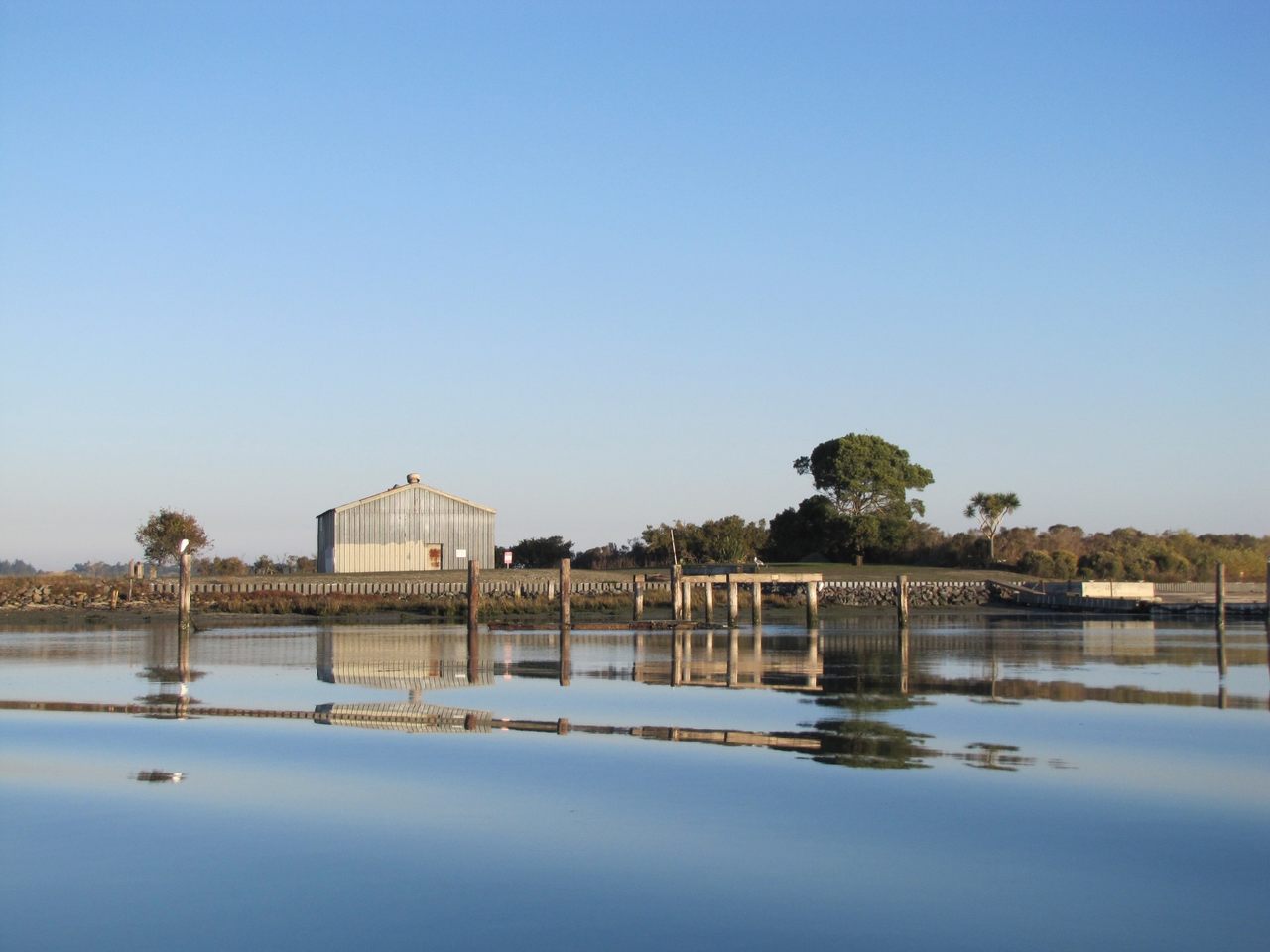
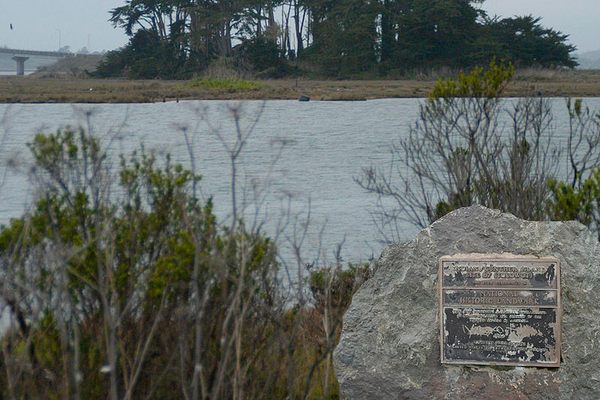

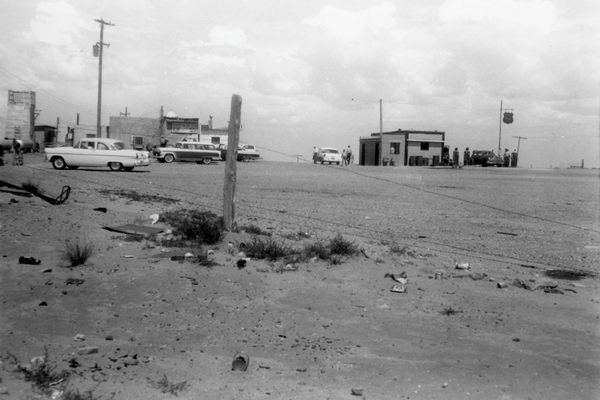

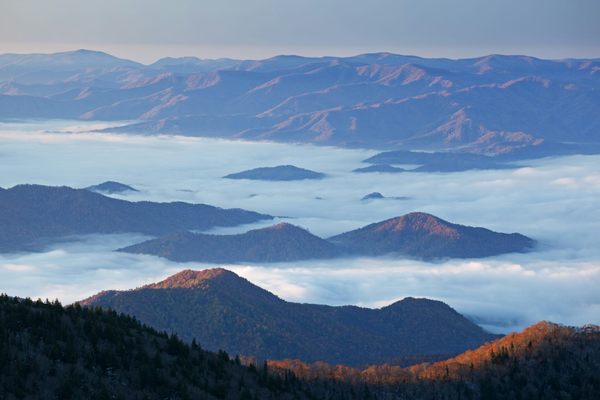






Follow us on Twitter to get the latest on the world's hidden wonders.
Like us on Facebook to get the latest on the world's hidden wonders.
Follow us on Twitter Like us on Facebook